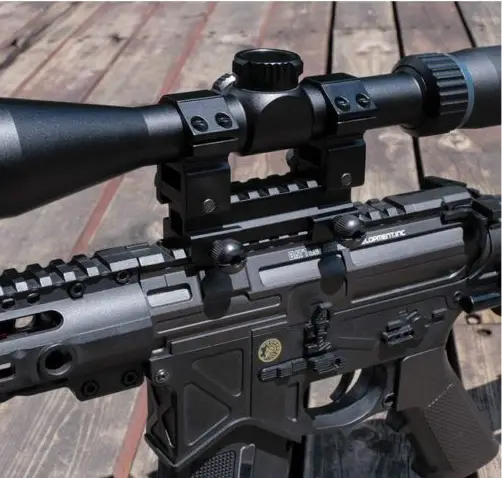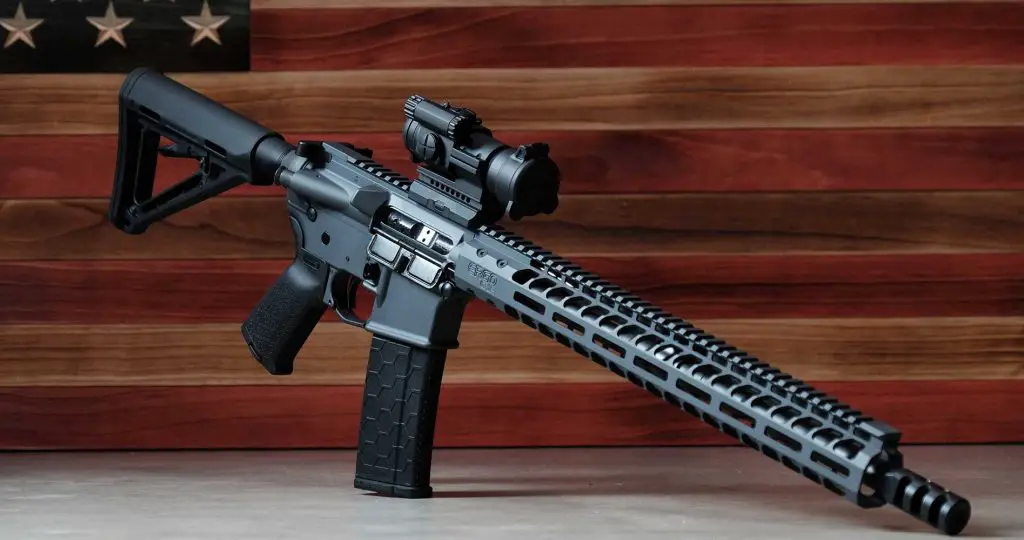
Direct Impingement vs Gas Piston: Which One Reigns Supreme?
Ask any AR-15 owner and they’ll tell you point-blank whether they prefer a direct impingement or gas piston system in their gun.
This is one of the most common debates among firearm enthusiasts and whatever choice you make, there’s a good chance you’re already loyal to it.
So what is the difference between direct impingement and gas piston?
These two terms are used to describe the gas-forced system inside of a firearm that fires rounds, ejects spent cartridges, and cycles through a new round. The key difference is where the gas is expelled once the job is done, though.
If you own an automatic rifle and still feel confused about what each of these systems does, we can help.
This guide will teach you the fundamental points of the direct impingement vs gas piston debate so you can finally get a grasp on how they differ and find out which type of rifle is best for you.
AR Functionality and Why It Matters
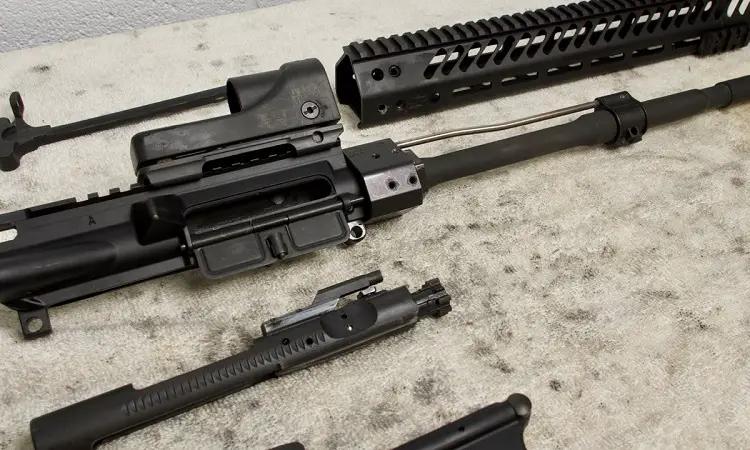
Before we can jump into the debate between direct impingement and gas piston systems, it’s best to get an understanding of how an AR functions.
A rifle must be self-loading and be able to do other functions like firing and extracting cartridges, among others, without assistance for it to be classed as an automatic weapon.
To do these jobs effectively and automatically, a firearm requires some sort of force to move its inner mechanisms, which are usually created by propelled gas.
While it’s true that both of these systems use gas to operate the inner parts and power the action, it’s what happens after they’re done that makes a difference and causes so much debate.
The Downlow on Direct Impingement

Direct impingement is considered the original system when it comes to automatic rifles and other guns.
The first time this system was used was in an experimental French rifle, and then later adjusted by Eugene Stoner as he created the AR-10 action which would later become the ArmaLite AR-15.
How Does It Work?
The direct impingement system of an automatic rifle works by bleeding the propellant gas through a hole in the barrel.
This gas then travels through a small tube until it reaches the bolt carrier mechanism, and as it makes contact this is known as impingement.
The gas continues down and pushes to the back of the rifle where it pushes out the spent case so that it can be extracted and ejected in a cycle.
From here, it is pushed forward by the action, which is usually spring-loaded, and then pulls a new round from the cartridge and loads it into the chamber.
Pros
- It’s a classic method: The strongest point that AR users make about direct impingement is that it was the original system used for these types of firearms. If you want to stay true to the weapon itself, you might feel the same.
- A reliable option: The direct impingement system has a solid reputation for being reliable and hardy. Although some people claim that the fouling caused by the gas makes it jam more easily, this has been disproven.
- Affordability: Purchasing a rifle that uses direct impingement is much cheaper, and so too is obtaining replacement parts. Not only are they more affordable, but they’re also easier to find as well, so if you ever have an issue and need a quick fix, the DI gun is the faster option.
- Lightweight and versatile: The weight of an impingent-driven AR is going to be a lot less than a gas-piston one because the tube itself is a lot smaller. This also means they’re more compatible with barrel lengths of various sizes which the gas option may not be.
- Less obvious recoil: As the gas inside of the weapon moves the bolt carrier more slowly and carefully than other systems, you’ll notice less recoil when you fire it. If you’re someone who already struggles with stability, this is a huge bonus.
Cons
- Conversion is hard: Because the standard AR uses the direct impingement system as its native method, you may find it hard to convert your weapon to anything else. It’s not as simple as swapping out the gas tube components for a piston setup without noticing experience serious failures with the gun, so configurations are not that great.
- A hot gun: After using a firearm that has a direct impingement system, you’ll need to give it some time to cool down before you can touch it. The gas that’s fired from the cartridge will come into contact with the action which means you can’t remove the bolt carrier until it’s reached a safe temperature.
- Requires deep cleaning: Although you don’t have to clean a direct impingement gun more frequently, you do have to clean it more deeply. The hot gas that fires through the inner mechanisms of the weapon will be susceptible to fouling and may need extra attention to get them clean.
Everything You Need to Know About Gas Piston
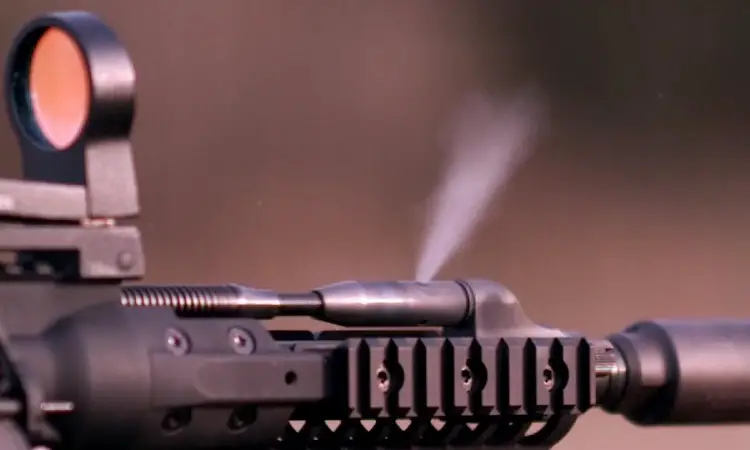
The first instance of gas piston technology was used in a single-shot breech-loading rifle in 1856 and it wasn’t until some time later that it would be found on modern automatic rifles.
In 1886, a patent was developed to use this in a repeating rifle but didn’t take off, and the Colt Model 703 was the first time this type of external piston, in their derivative of the AR-15.
How Does It Work?
At first glance, it appears that gas pistol works similarly to direct impingement systems, and while that’s somewhat true, it’s how the gas is expelled that’s different.
The firing process begins the same as with the direct impingement system, with a propellant gas being bled into the barrel of the firearm.
This gas isn’t forced into the tube though, but rather expelled out and stored in a different cylinder.
Inside of this cylinder is a piston, and as the gas enters, it moves the piston and pushes the bolt carrier to the back of the rifle so it can extract and eject the spent case.
After this, it operates similarly to the direct impingement system again, with the piston then being pushed forward by a spring. From here, it takes a new round from the cartridge and locks it into the chamber.
Pros
- Easier cleaning and maintenance: The cleanliness of the operating system in a gas piston gun is considered superior because of the unique way it expels the gas. As the gas goes into a separate chamber, it causes less fouling and means when you have to clean your rifle, it won’t be such an arduous task.
- Consistency: If you compare the two, people generally considered a piston-powered gun to be the more consistent option. This is due to their strength and ability to deal with variations in ammunition, which might otherwise cause a failure in a direct impingement system rifle.
- Cool and less wear: A piston system rifle will almost always be cooler to operate because of its inner mechanisms and how the hot gas never comes into contact with the action. Even after shooting 100 rounds with one of these AR rifles, you’ll find the action of the weapon to be cool, and it’s even possible to remove it entirely and hold it in your hand.
Cons
- Prone to issues: Sometimes, an AR that uses a piston system will experience an issue called “bolt carrier tilt”. This occurs when the piston causes the rear of the carrier to slant which can lead to increased wear. The phenomenon is usually more common in ARs that have been modified to use the gas piston system.
- Not the traditional way: When compared to the conventional direct impingement system, some people believe that the gas piston is mechanically unsound. If you’re someone who prefers their weapons to be made the traditional way, this might be a downside for you as well.
- Can have problems if not cleaned: A common misconception is that using a piston means you don’t have to clean the weapon as often which leads to some of these AR rifles becoming dirty and malfunctioning. Regardless of the type of system used to power the action, all rifles and firearms need regular cleaning.
The Blowback System Alternative
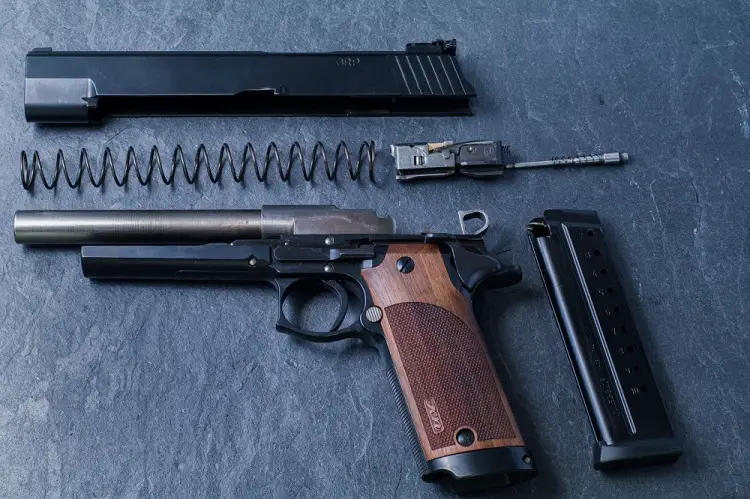
A third but not so common alternative to the gas piston and direct impingent system is a blowback.
This setup is usually found on specific gun types like pistol caliber carbine uppers that already aren’t using the common AR-15 gas system.
The blowback system works by forcing the case to the back which then pushes the bolt to the rear as well.
A spring mechanism then pushes it forward so that the gun cycles, which means no need for gas, but they can be pricey.
Which One Is Best For My Firearm?

As the gas piston and direct impingement systems both operate with forced gas, it doesn’t seem that there should be too much debate over which one is best, yet there is.
Each of these systems has something to offer, so it depends entirely on the individual and their weapon range as to what will suit them best.
However, as always with gun ownership, there’s a lot of room for configuration and versatility.
As you’re working with an AR that already has a good reputation for being flexible, you might want to install an impingement-driven upper receiver on a gas piston-powered AR and get the best of both worlds whenever you choose.
The overall difference in feeling between these two systems as they’re fired is minimal, especially if you’re working with some type of gas suppression accessory.
The main difference is the cleanliness that the gas piston system offers, but they can be pricier and aren’t considered the traditional method of operation for an automatic rifle.
The Right Gas System Solution
One of the beauties of owning an automatic rifle is how much configuration is possible, including whether you want to use a gas piston or direct impingement system to power up the action.
To find the best solution, think about your range of firearms and what matters most, and you’ll come up with a winner.
Related Questions
There’s so much more to gun ownership than just choosing a firearm and being done with, as debates like gas piston vs direct impingement will show.
If you still have questions about the inner workings of these powerful weapons, read on for some FAQs that might be able to help.
What is a Rifle Action?
The action is the mechanism of a rifle or firearm that is responsible for loading, firing, and ejecting a cartridge, making it one of the most important parts.
A gun is usually categorized by the type of action is uses, with the most common ones being pump action, bolt action, lever action, automatic, and semi-automatic.
How Does an Automatic Rifle Work?
An automatic rifle can continually fire by using the excess energy that the last discharge created to then strike the primer, igniting the propellant and discharge another projection.
This unique action is different from other types that require some sort of manual action to fire the next projection.
What Does the 15 Mean in AR-15?
AR stands for ArmaLite Rifle which was the name of the brand that first developed the rifle and then later sold it to Colt in 1959.
The 15 was added by Colt and when the patent for the gun expired in the 1970s, other manufacturers continued using it as the general term for this type of firearm.
Resources:
![5 Best Pellet Guns Under $100 [2023] 8 bb rifle gun](https://www.armorholdings.com/wp-content/uploads/2022/11/bb-rifle-gun.jpg)
